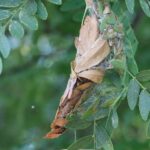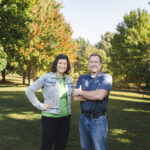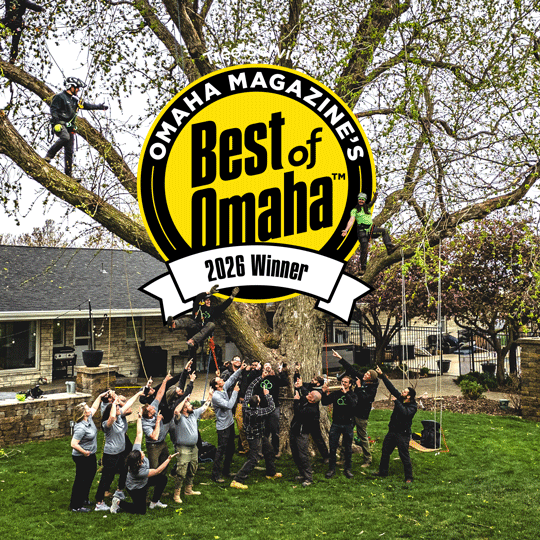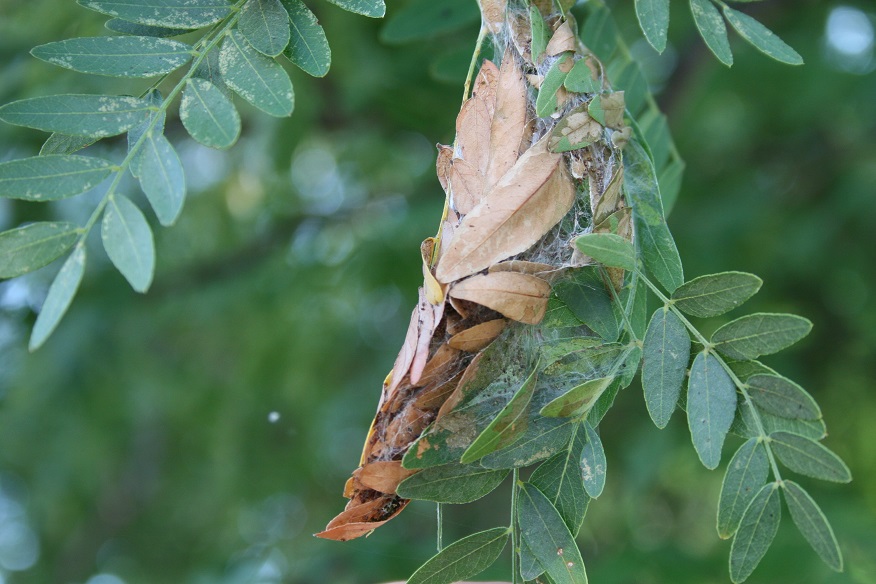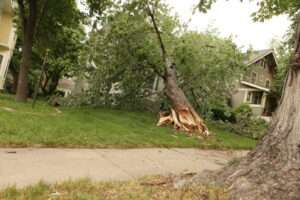 If you’re looking to replace a tree lost in the storm we experienced in July, choosing a species that is both native and well-suited to our midwest climate is key to ensuring long-term success. After all, that’s what we’re all about: Beautiful trees for life.
If you’re looking to replace a tree lost in the storm we experienced in July, choosing a species that is both native and well-suited to our midwest climate is key to ensuring long-term success. After all, that’s what we’re all about: Beautiful trees for life.
Let’s take a moment and learn from history. The most common species we saw fail in the storm were Ash, Spruce, Maple, Pear, and Crab Apple. By selecting trees that are adapted to our volatile climate, soil conditions, and occasional harsh storms, you’ll be setting your landscape up for success.
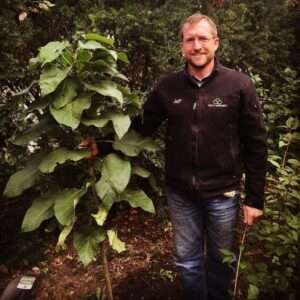 Below, we have compiled a list of hardy, beautiful trees that not only thrive here but also contribute to the health of our local ecosystem. Whether you’re looking for a fast-growing shade tree or a stunning ornamental, these species offer something for everyone.
Below, we have compiled a list of hardy, beautiful trees that not only thrive here but also contribute to the health of our local ecosystem. Whether you’re looking for a fast-growing shade tree or a stunning ornamental, these species offer something for everyone.
Additionally, we’d like to link to some useful resources we’ve offered in the past:
- Great Plains Nursery
- Our favorite local source for native and well-adapted species, grown from local seed in a patented RootMaker bag. Great Plains regularly delivers to Omaha.
- DIY Tree Planting (3-part Series)
Tree Species Recommendations
Large Shade Tree Species
Northern Catalpa(Catalpa speciosa)
Catalpas are a personal favorite of ours due to their stunning white flowers that attract pollinators in June, along with their large, heart-shaped leaves and unique branching patterns. Fast growers, they are an excellent option for large yards or open spaces. This species has no known pests or diseases in the midwest. Height: 40-60 feet. Soil: Variable; Adaptable to flooding.
Oak(Quercus species)
Red, Swamp White, Chinquapin, English, Bur, Shingle Oak are reliable, strong, and resilient trees with few problems here in the Great Plains. They thrive with deep root systems that make them drought-resistant once established. Height: 60-80 feet+. Soil: Variable.
Hybrid Elm(Ulmus)
Many Dutch Elm Disease-resistant elms are now available (such as Princeton, Frontier or Triumph). They grow quickly and offer a beautiful, classic elm shape making them ideal for those seeking quick shade. Height: 50-70 feet. Soil: Well-drained; Variable.
American Sycamore(Platanus occidentalis)
With its strikingly beautiful, peeling white bark, the American Sycamore provides winter interest. These trees are strong, resilient, and best suited for larger landscapes where their size can be fully appreciated. Height: 70-100 feet. Soil: Well-drained; Tolerate flooding.
Tuliptree(Liriodendron tulipifera)
Known for its tulip-like flowers, the Tuliptree is a unique beauty that grows very large. These trees have few problems and live long, making them an excellent choice for those wanting a grand, long-lasting shade tree. Height: 70-90 feet. Soil: Well-drained, acidic.
Common Hackberry(Celtis occidentalis)
A durable and resilient shade tree, Hackberries tolerate drought, wind, and poor soil conditions, making them a great option for Nebraska’s sometimes harsh environment. Height: 40-60 feet.
Ornamental & Understory Tree Species
Redbud(Cercis canadensis)
This ornamental Redbud showcases bright pink flowers in spring and is a great alternative to crabapple and pear trees. They are drought-tolerant once established and make an attractive and cheerful addition to any landscape. Height: 20-30 feet. Soil: Well-drained; variable.
Serviceberry(Amelanchier canadensis)
Serviceberries are ornamental trees with vivid red fall color and berries that provide food for wildlife. They are great for smaller landscapes and provide multi-season interest. Height: 15-25 feet. Soil: Well-drained, slightly acidic.
Dogwood(Cornus species)
Dogwoods are ornamental, shrub-like trees with various flower colors depending on variety, including white, pink, and red. Dogwoods add beauty to any yard, particularly in spring. Height: 15-25 feet. Soil: Moist, well-drained. Sun: Partial Shade.

